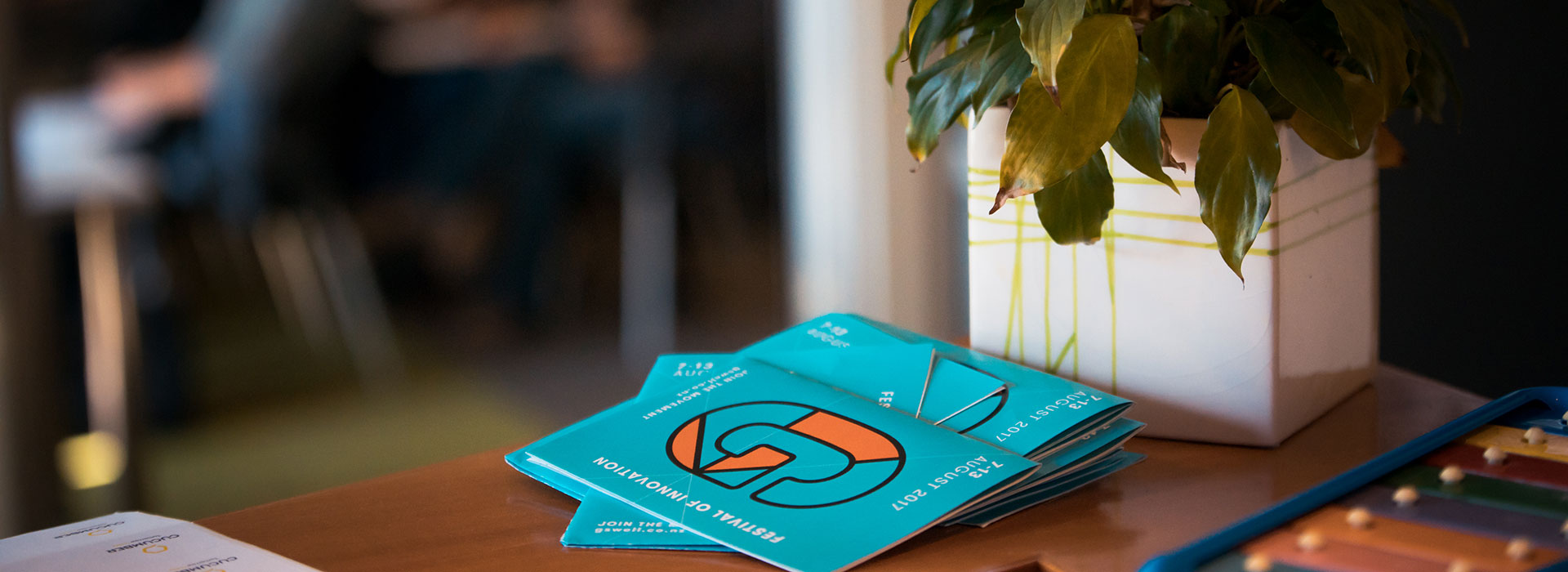Dipping our toes in the Groundswell
Groundswell had all local creatives and innovators in its grip last week and that included our team here at Locus. A ton of innovation talks, events, and workshops were on offer; so much to do in so little time! Next to the (to us) well known YIA forum, we tried to get to as many events our busy schedules would allow. Below are some recaps of the events we managed to visit.
First off, we would like to high five the entire team at Priority One and all partners involved. Special thanks go out to Stacey Jones, the rock star driving it all. Year 1 is one for the books, with many more to come.
Design the City — a recap by Daniel Faris
In a nondescript building in the Tauranga CBD, there is a colourful space, filled with whiteboards, post-its, and clever thinking. This is the Tauranga City Council’s Co-design Lab; space where the council (and friends) are working to unravel some of the city’s trickiest problems using design tools.
We’re big fans of the Lab and the work that they’re doing at the council, so we were thrilled to find out that this was the stage for Groundswell’s ‘Design the City’ experiment. People from all corners came together to tackle the question: “How might we improve the experience of the bus exchange in downtown Tauranga?” The results – real insight into the current experience of the bus exchange, clever ideation of what could make real improvements, and the development of prototypes to showcase and test these ideas.
We’re hoping the council can continue this iterative process now the experiment is complete – we’d love to see that bus exchange go from bleak to buzzing!
Cucumber’s User Research Workshop — Nick Eaton reporting
Darting out of the rain and into Cucumber HQ Tauranga, I was greeted by the smell of hot pastries and finger food. My kind of place. The room was filled with eager attendees awaiting Carol Mahaj’s presentation on Agile thinking for non-development projects. She certainly delivered a very insightful overview of what Agile is and how it’s utilized by companies ranging from fighter jet manufacturers to wineries to radio stations. This goes to show the diversity of which it can be applied; but what exactly is Agile and how can it be used? Think of it as a set of principles that guide decisions. It values individuals and interactions over process and tools. In a roundabout way, it’s a mindset, an approach that unlocks rapid feedback to define direction so decisions can be made quickly.
“A mindset is simply a set of principles/values which guide decisions we make every day. So — our principles and values need to allow us to quickly adapt and easily change leading to innovation.”
Agile is not to be confused with Lean. Lean is about increasing efficiency & reducing waste whereas agile is all about change. It’s used best when we are unsure about the whole journey or the outcomes and as a result, gives real-time visibility of work in progress or work done. It allows us to fail fast but quickly regain direction, something every team or company can benefit from.
“You don’t learn to walk by following the rules. You learn by doing and falling over.”
Richard Branson
Cucumber’s Service Design 101 Workshop — Simon Crane‘s findings
After Nick’s crash course in Agile thinking, the temptation of hot lunch was too much to turn down. Cucumber hosted the final Lunch & Learn event for Groundswell: Service Design 101, and I went along to see what insights I could pick up from Cucumber’s design thinking guru, Peter McHannigan.
“Service design is a human-centred approach to solving problems for customers and communities”. At its heart, Peter talked about successful service design involving an exceptional service delivery from the organisation, paired with a great customer service experience. Many organisations think they are red-hot at internally delivering their service, but often it’s a customer’s experience where they have much to gain.
Peter took us on the design thinking journey for service design, impressing the importance of empathy research and customer interviews to ensure you are defining and solving the right problem.
“If you don’t help your customers, somebody else will.”
After defining the problem, it’s also important that you allow your team to ideate and validate to get the right solution, rather than just cracking on and solving the problem you identified.
From a recent project with Tauranga City Council’s animal series, Peter gave us five takeaways to better go about designing better services for our customers:
- Balance buy-in with progress.
When going out to do customer and stakeholder interviews, understand the balance between undertaking a large number of interviews and forging progress. You might only need to do a few interviews up front to get started, and it’s knowing when to talk to the right people at the right time in the design process. - Don’t be surprised if people don’t want to talk to you.
Try and get a wide range of people, don’t just and talk to people that look like you. People also don’t really respond to bribes. Rather, people that want to talk are usually happy to give feedback. - Be ready to justify your sample size.
How many interviews are enough? It’s all about getting saturation in common themes that arise during your interviews. After 6 interviews, you generally should reach that saturation level, with studies showing you are likely to uncover 96% of common themes and information. - A lot of people don’t like change.
People like their tried and true methods, but learning and product evolution never stop. You can always give your customers a better experience, and your services should always be evolving to meet their needs. - Like most things, it can take a while to crack service design!
Just start — you don’t have to do everything at once! Begin with a few customer interviews, and then go from there. You’ll be amazed by what you can learn just from talking and empathising with one customer. Then see if you can begin to implement some of the design thinking methodologies into your organisation.
“Service design is a human-centred approach to solving problems for customers and communities.”
As mentioned at the start of the article we also dropped it at the YIA Forum. We heard from an Irish astronaut who had hands on the Mars Rover before it launched, an ad agency guru taught us her hard earned lessons developing a pirate-themed eye test for kids, and a shoe designer from Nike shared the next big thing coming for marathon runners. A common thread: if you’re curious about something, give it a go! This so well aligns with our mantra — stay curious.
We also were treated to a chat from last year’s Young Innovator Awards senior award and internship winner, who gained so much from her experience she changed her major (from one field of engineering to another). Our heads are still positively buzzing from that event and will report in length on it soon. Watch this space!
And as a special bonus, Mike went along to the Blue2Green workshop titled “From Innovation to Commercialisation”. Read what he had to say about this first time round New Zealand Marine Biotechnology Convention here.
Thanks again Groundswell, we look forward to next year. What events did you get along to, or wish you could have attended?
Photo by Richard Robinson, courtesy Priority One
Want to read more on creativity, design, product development and innovation? Go to our Six Lenses Blog.


This sounds amazing and I sense at its heart is a good dollop of nurture management (Peter Senge(